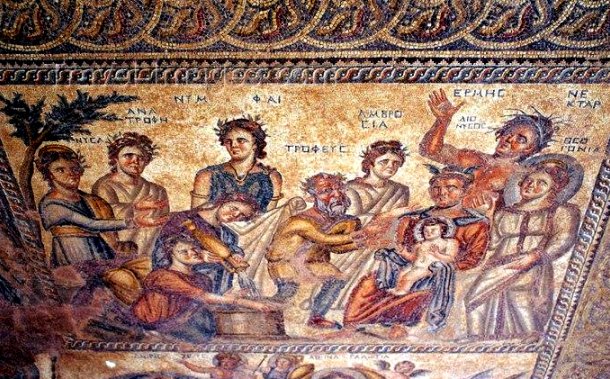Two images, created nearly a thousand years apart, but with a
strange similarity. So what are they?


The first is familiar enough. The Adoration
of the Magi, by Fra Angelico, c1433, is in the Museo di San Marco in
Florence. It is a section of the predella of the Linaioli Tabernacle.
It does raise a few problems for the observer Ė
who are all the people in the image? To the left is a bevy of the
attendants of the Magi. Two magi are kneeling in adoration, presenting
their gifts, while the third stands in the background, pointing to the
star that showed them the way. A rather splendidly dressed Joseph stands
haloed to the right, though who the other grand character standing with
him is not clear. A donor? The grand clothing does represent the donors:
the clothmakerís guild.
The second image is a fifth century Roman Mosaic
discovered in 1983 at the ĎHouse of Aioní near the site of ancient Nea
Paphos, in Cyprus. It is the second in a series of five mosaics showing
mythological narratives. Here Dionysus is shown as a child, sitting on
the lap of Hermes. The infant godís divinity is shown by the surrounding
characters, which represent aspects of the life of the gods. The figure
behind, with the blue Halo, represents Theogony, the birth and lineage
of the gods. Behind Hermes are Nectar and Ambrosia, drink and food of
the gods. Hermes is handing Dionysus to the aged figure of his teacher
to be, Silenus, shown here as Tropheus, meaning educator.
Three
Nymphs prepare the infantís bath. Second from the left is Anatrophe, his
nurse in infancy; on the left is Nysa, representing the mountainous area
claimed to be the site of Dionysusís birth.
So is the similarity between the two images
merely coincidence? There are many academics that donít think so.
Home page: explore the site